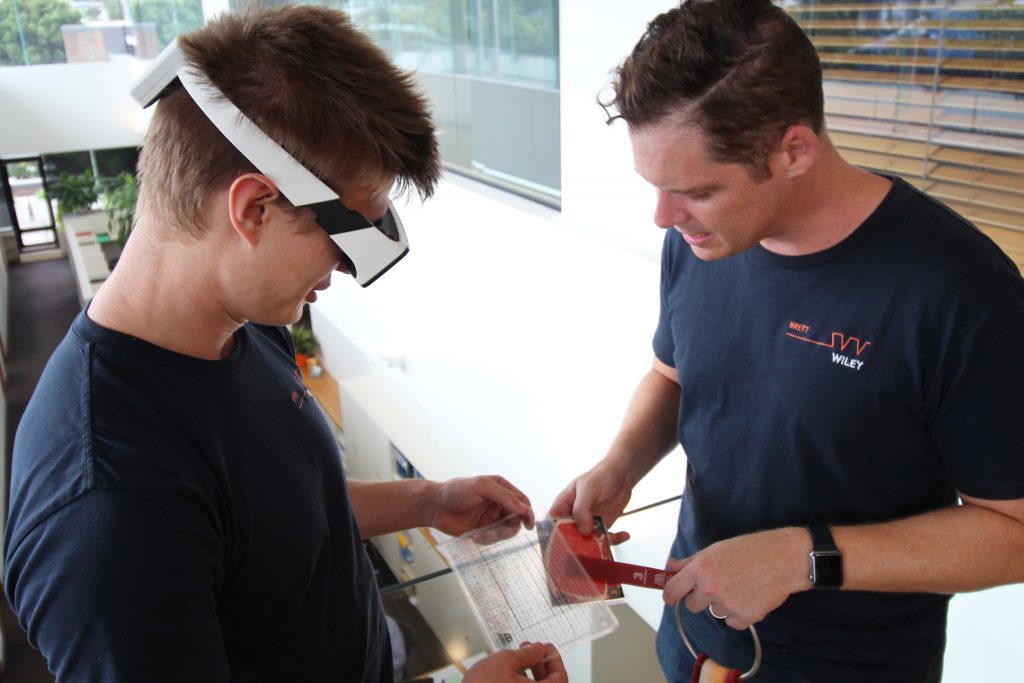Augmented Reality helps lead quality in Australian meat industry
Meat and Livestock Australia (MLA) have partnered with Wiley’s R&D and Innovation team to explore how technology can bring meat grading into the future utilising Augmented Reality (AR).
The pair collaborated on a research and development project to innovate meat grading using computer vision, with the goal of objective measurement and decision support for grading staff. The innovative technology will help cement Australia as the world’s leading red meat producers, delivering high quality future supplies to domestic and international markets.
The AR platform, named ARGA (Augmented Reality Grading App) facilitates faster, more consistent and more precise meat grading while taking full advantage of the experience and capabilities of the industry’s meat graders. The solution is designed to discern the colour of a meat sample; accurately can determine the area of the latissimus dorsi muscle and introduces handsfree scanning of meat sample tickets. These features have been demonstrated on a Vuzix m300 augmented reality headset as well as on various hand-held devices.
This project consisted of two phases;
- A research phase reviewing and cataloguing relevant augmented reality projects, case studies and technology
- A proof of concept phase in which a prototype of an augmented reality application was developed for an AR head mounted display and tasked with reducing the subjectivity in MSA grading in a processing environment.
The subjective collection and assessment of meat grading attribute in the industry have contributed to trust issues between producers and processors. MLA have stated that producers and feedlot operators are concerned about the precision of meat grading in Australia. Meat graders are not to blame. Humans are simply not built to repeatedly make objective judgements day in day out. In an American study of meat grading, it was found that 50% of meat samples were mis-graded in some way.
Wiley’s R&D and Innovation Director, Brett Wiskar said “we are really excited to be working with the MLA in research and innovation projects that will move the red meat industry forward into the digital era. We congratulate MLA on their foresight to investigate and invest in this technology.”
In 2016, Australia was responsible for the exports of more than a million tonnes of beef exports making this country one of the leading meat producers in the world. Meat and Livestock Australia (MLA) is working hard to keep Australia at the forefront of meat production globally with technological initiatives designed to ensure Australia’s future as a global industry leader.
Mr Wiskar explained some of the benefits of the meat grading AR platform. “Decision assistance for meat graders may lead to improved transparency and consistent outcomes for the meat industry. Increased precision has obvious benefits such as accuracy on a carcase by carcase basis and broader labour efficiencies but there are also subtle flow-on positive impacts to the industry and processors.
Decision support is likely to bring about greater speed and decreased training periods for meat graders. In addition, such a solution has the potential to normalize grading performance across shift duration, between graders, between facilities and across processor groups.”
Sean Starling, General Manager – Research, Development and Innovation at MLA said “We can see the potential of augmented and virtual reality in many applications both on farm and in manufacturing.
On farm augmented reality will become vital as more autonomous vehicles evolve and provide a silent survive. These services will only report in when there is a decision for the producer to make. Donning on a pair of glasses will immediately take the producer to the location of the autonomous vehicle and the situation at hand will be presented in panoramic view for the producer to make a decision.
In processing plants with advancements of objective measurement systems, operational staff will be able to dissect livestock and sub-primals more accurately than with the naked eye.
With processing equipment becoming more and more sophisticated, and by default complicated, mixed reality will be used by operators to start and troubleshoot equipment. Maintenance staff will use the same technology to fast track troubleshooting and repairing sophisticated equipment.”
Both the augmented reality market and the platform developed through this research show substantial potential. The successful demonstration of a meat grading application in conjunction with the continuing development of augmented reality solutions make it reasonable to expect augmented reality to play a substantial role in the meat industry in years to come. This platform will have much further potential as the technology advances. Watch this space!
MLA and Wiley are now working together to prepare a Rural R&D for profit submission on an augmented and virtual reality program for all of Australian agriculture.

